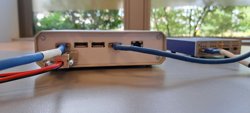Dutch innovation makes satellite instruments cheaper and more flexible
The Dutch company Technolution, together with NLR and supported by NSO, developed a smart on-board computer for satellite instruments. The invention makes instruments for small satellites more flexible, their builders more independent and the Dutch supply chain of space technology more complete.
Impression of the CDPU board
The Dutch space industry has a strong reputation as a manufacturer of sensors and satellite instruments. But the electronics that control and read these instruments are often purchased abroad. For example, the satellite instrument Tropomi is controlled with Swedish electronics.
Technology company Technolution and the Royal Netherlands Aerospace Center (NLR) wanted to bring the capacity to build this component to the Netherlands. With money from the NSO SBIR scheme, they developed a Control and Data Processing Unit (CDPU). An on-board computer that can control sensors or instruments on a satellite and read out the collected data.
Small satellites
What sounds like a relatively simple piece of electronics is certainly not, says Sybren de Jong, senior researcher and engineer at NLR: 'Such a computer should not only control and read a sensor or instrument, but also be suitable for use in space. It must regulate heat management, be compact and lightweight and be able to withstand a high dose of radiation.'
And then there is the lifespan of the electronics. For an instrument like Tropomi, it must be about ten or fifteen years. It costs several million euros to build something that will last that long. 'That is possible for a large satellite instrument such as Tropomi,' says De Jong, 'But what do you do when you build smaller satellites that are five to ten years in space and have to be built for a relatively small budget?'
The market for small satellites and constellations, newspace, is on the rise. The CDPU of Technolution and NLR is specifically intended for this market. De Jong: ‘We listened to companies such as Cosine and Airbus Netherlands. For them, but also for some satellites of ISISpace, for example, this electronics can offer a solution. Our CPDU is very reliable, but also cost-effective for smaller missions.”
Another unique selling point is the flexibility of the electronics. The CDPU is designed to connect any type of sensor or instrument to any type of satellite. “The instrument builder can build and test the instrument independently of the satellite platform,” says Gerard Rauwerda, Business Developer at Technolution. “And the software can be updated while the satellite is already in space, allowing you to make changes to the security and processing of the satellite data even after launch.”
Testing in space
The CDPU box in the office on Earth. The next step is to test the CPDU in the space environment.
Technolution has so far only built specialized and highly reliable electronics for use on earth. With the CDPU, the company also hopes to serve the aerospace industry. 'Because we ourselves have no experience in aerospace, we sought cooperation with NLR,' says Rauwerda. “The space sector is conservative. You first have to gain confidence, show what you can do. That is why it was important for us to work with an organization that does have this domain knowledge: NLR.'
The SBIR scheme enabled Technolution and NLR to develop a prototype of the CDPU. This was tested with the help of SRON and Airbus Netherlands and proved to work well. The next step is to prove that the electronics also work in space. “We are in discussion with NSO and ESA about a follow-up process,” says De Jong of NLR. “There is interest from several quarters. Our CDPU is seen as a valuable solution for small satellites and a great addition to the Dutch supply chain.”